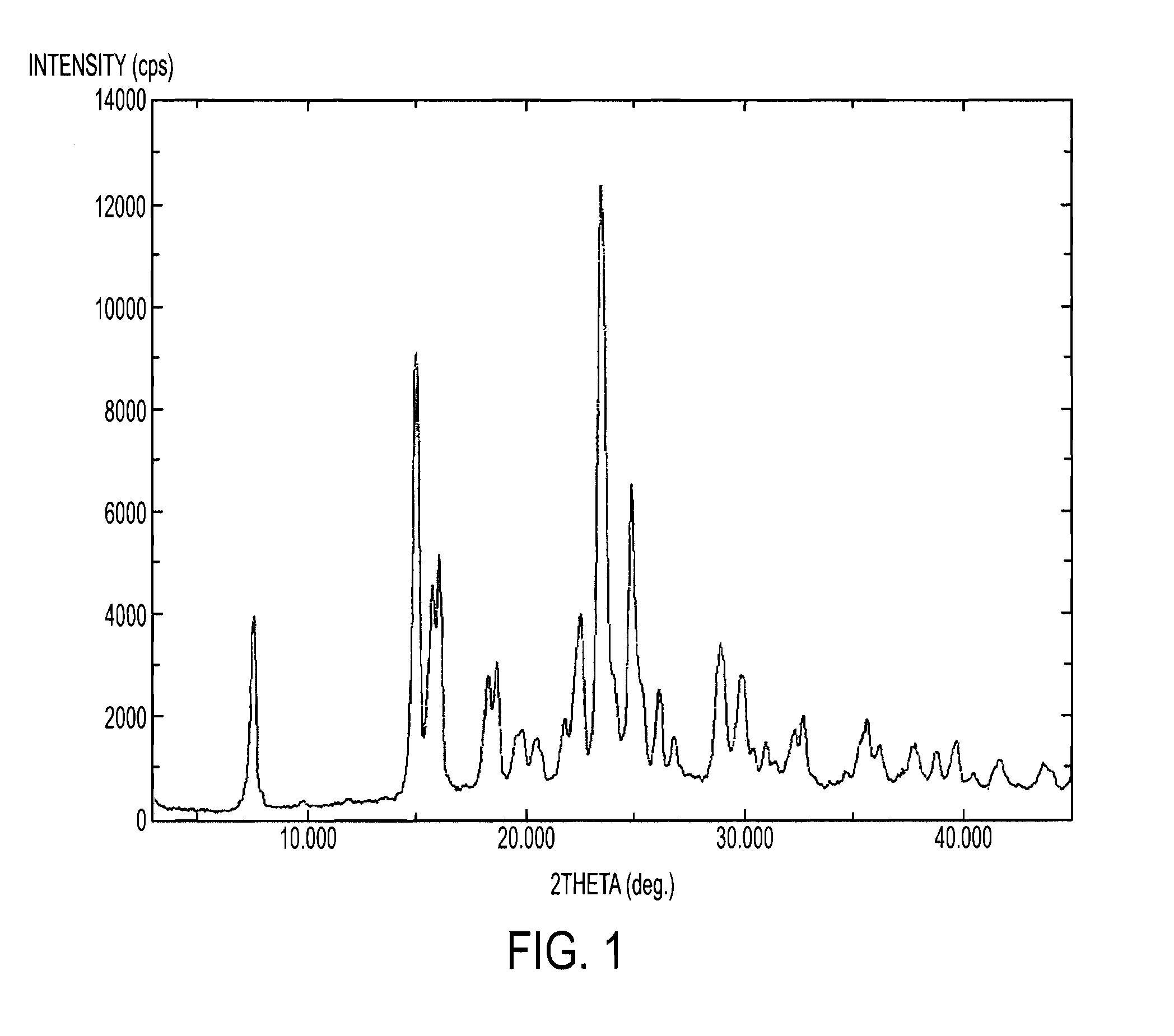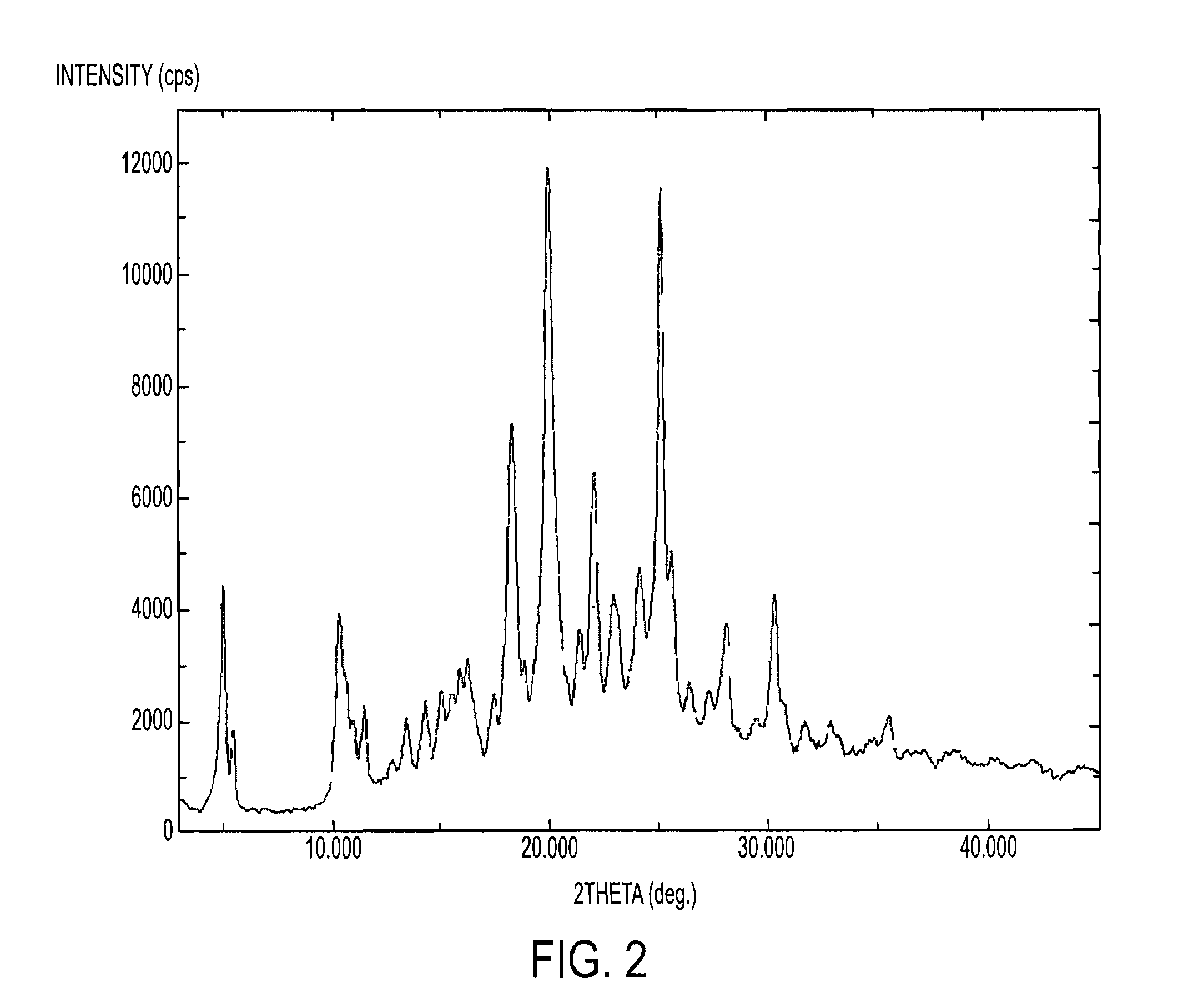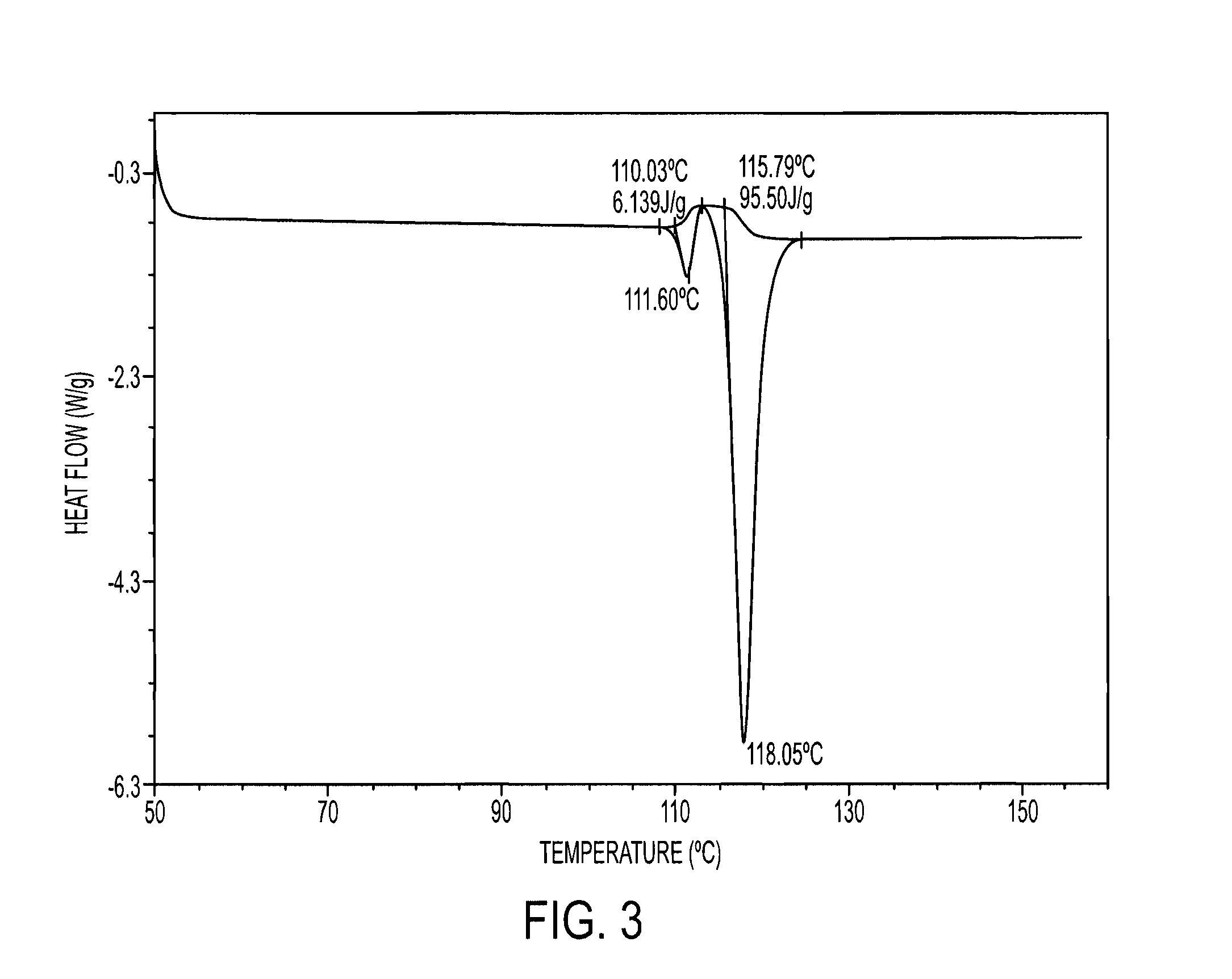Process for the preparation of tenofovir
a technology of tenofovir and process, which is applied in the preparation of carboxylic compounds, group 5/15 element organic compounds, biocide, etc., can solve the problems of low product yield, low conversion of starting materials, formation of unwanted products, etc., and achieve high product yield and quality
- Summary
- Abstract
- Description
- Claims
- Application Information
AI Technical Summary
Benefits of technology
Problems solved by technology
Method used
Image
Examples
example 1
Preparation of Tenofovir (Using Sodium Amide and Magnesium Chloride)
[0110]To a clean 3-necked 2 L round bottom flask equipped with a mechanical stirrer, thermometer socket and addition funnel was charged dimethyl formamide (400 ml) and 9-[2-(R)-(hydroxy)propyl]adenine (HPA) of formula III (100 gms) at temperature 20° C. to 35° C. Cooled to 0° C. to 5° C. and added sodium amide (40.4 gms) at temperature 0° C. to −10° C. and stirred for 30 minutes at same temperature. Heated to 25° C. to 30° C. and stirred for 2 hours at same temperature. Added magnesium chloride (49.2 gms) and stirred for 1 hour at 25° C. to 30° C. To the reaction mass was charged toluene (300 ml) and heated to 50° C. to 55° C. and stirred for 4 hours at same temperature and then again heated to 75° C. to 80° C. At this temperature added diethyl p-toluene sulfonyloxy methyl phosphonate (250 gms) (DESMP) and stirred for 4 hours at same temperature. Reaction was monitored by HPLC and observed 78% of the reaction produc...
example 2
Preparation of Tenofovir (Using Sodium Hydride and Magnesium Chloride)
[0115]To a clean 3-necked 2 L round bottom flask equipped with a mechanical stirrer, thermometer socket and addition funnel was charged dimethyl formamide (500 ml) and 9-[2-(R)-(hydroxy)propyl]adenine of formula III (100 gms) at temperature 20° C. to 35° C. Cooled to 0° C. to 5° C. and added sodium hydride (41.5 gms) and stirred for 60 minutes at same temperature. Heated to 25° C. to 30° C. and added magnesium chloride (56 gms) and stirred for 2 hours at 25° C. to 30° C. To the reaction mass added diethyl p-toluene sulfonyloxy methyl phosphonate (225 gms) at 25° C. to 30° C. and stirred for 1 hour at same temperature. Heated to 70° C. to 75° C. and stirred for 4 hours at same temperature. Reaction was monitored by HPLC and observed 75% of the reaction product formed. Cooled the reaction temperature to 25° C. to 30° C. and added methanol (20 ml) and then solvent was removed from the reaction mixture by distillation...
example 3
Preparation of Tenofovir (Using Sodium Amide and Magnesium Acetate)
[0119]To a clean 3-necked 2L round bottom flask equipped with a mechanical stirrer, thermometer socket and addition funnel was charged dimethyl formamide (200 ml) and 9-[2-(R)-(hydroxy)propyl]adenine of formula III (50 gms) at temperature 20° C. to 35° C. Cooled to 0° C. to 5° C. and added sodium amide (20.2 gms) at temperature 0° C. to −10° C. and stirred for 30 minutes at same temperature. Heated to 25° C. to 30° C. and stirred for 2 hours at same temperature. Added magnesium acetate (36.8 gms) and stirred for 1 hour at 25° C. to 30° C. Heated to 60° C. to 65° C. and stirred for 2 hours at same temperature and then again heated to 75° C. to 80° C. At this temperature added diethyl p-toluene sulfonyloxy methyl phosphonate (125 gms) and stirred for 4 hours at same temperature. Reaction was monitored by HPLC and observed 55% of the product formed. The solvent was removed from the reaction mixture by distillation under...
PUM
 Login to View More
Login to View More Abstract
Description
Claims
Application Information
 Login to View More
Login to View More - R&D
- Intellectual Property
- Life Sciences
- Materials
- Tech Scout
- Unparalleled Data Quality
- Higher Quality Content
- 60% Fewer Hallucinations
Browse by: Latest US Patents, China's latest patents, Technical Efficacy Thesaurus, Application Domain, Technology Topic, Popular Technical Reports.
© 2025 PatSnap. All rights reserved.Legal|Privacy policy|Modern Slavery Act Transparency Statement|Sitemap|About US| Contact US: help@patsnap.com



